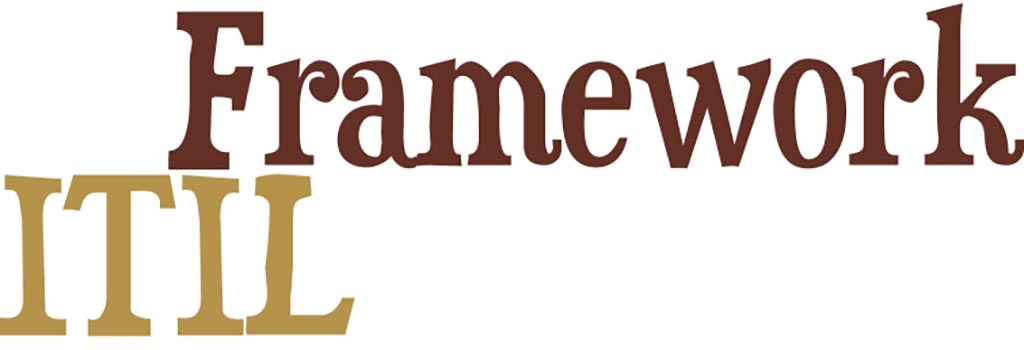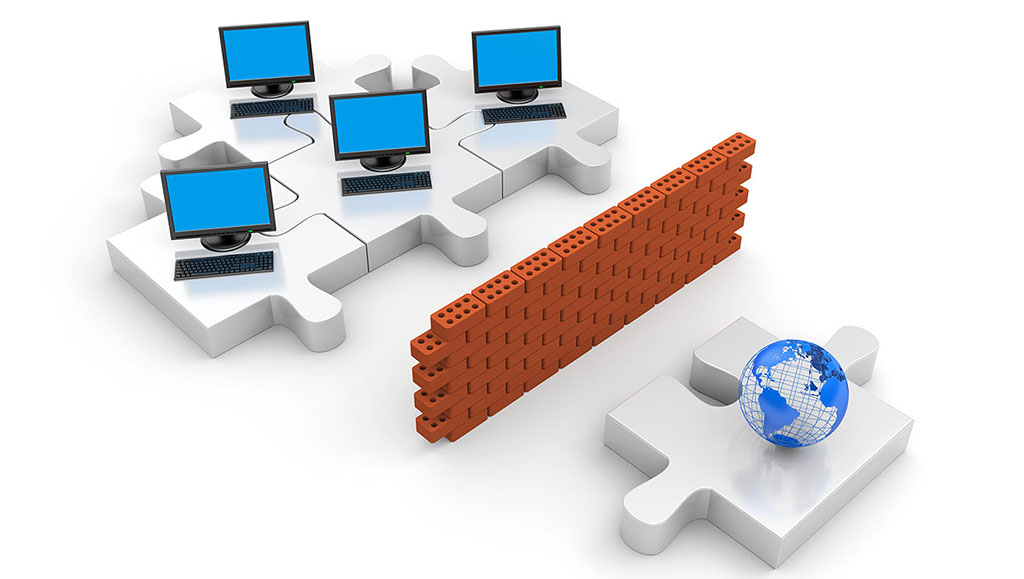The IT Infrastructure Library (ITIL) is a library of volumes describing a framework of best practices for delivering IT services. ITIL’s systematic approach to IT service management can help businesses manage risk, strengthen customer relations, establish cost-effective practices, and build a stable IT environment that allows for growth, scale and change. In fact, ITIL describes processes, procedures, tasks, and checklists which are neither organization-specific nor technology-specific, but can be applied by an organization toward strategy, delivering value, and maintaining a minimum level of competency.
ITIL has gone through several revisions in its history and currently comprises five books, each covering various processes and stages of the IT service lifecycle. ITIL Developed by the British government’s Central Computer and Telecommunications Agency (CCTA) during the 1980s. Over the years, ITIL’s credibility and utility became recognized, and in 2005 its practices contributed to and aligned with the ISO/IEC 20000 Service Management standard, the first international standard for IT service management. Since 2013, ITIL is owned by Axelos. The ITIL 4 Edition starts with the ITIL Foundation book, which was released on February 18, 2019. It’s a significant update from ITIL V3 which was in widespread use for over a decade. This version of ITIL focuses on company culture and integrating IT into the overall business structure.
In fact, ITIL 4 contains nine guiding principles that were adopted from the most recent ITIL Practitioner Exam, which covers organizational change management, communication and measurement and metrics. These principles include:
- Focus on value
- Design for experience
- Start where you are
- Work holistically
- Progress iteratively
- Observe directly
- Be transparent
- Collaborate
- Keep it simple
Every year, organizations invest heavily in adopting and adapting ITIL into their business practices and upskilling their workforce with ITIL qualifications.
Since ITIL’s last update, the IT department has grown to become integral to every business and the new framework accommodates this by being more agile, flexible and collaborative.
Some key concepts/principles of ITIL are:
- Delivering maximum value to customers
- Optimizing resources and capabilities
- Offering services that are useful and reliable
- Planning processes with specific goals in mind
- Defining roles clearly for each task
Source: en.wikipedia.org and cio.com
ITIL Framework
The framework of ITIL is divided into five broad stages:
- Service Strategy
- Service Design
- Service Transition
- Service Operation
- Continual Service Improvement
Source: simplilearn.com and cherwell.com
ITIL Service Strategy
ITIL Service Strategy involves examining the current market needs and existing offerings and creating a plan for services to meet needs. Service Strategy is made up of five separate processes.
- Service Portfolio Management: This process focuses on managing the portfolio of all offered IT services. Service Portfolio Management ensures that delivered services remain aligned with Service Strategy goals.
- Financial Management: This process focuses on financial spending and services: the budgeting (Planning how the money will be spent by a service provider), accounting (Tracking how money is spent by a service provider), and charging activities of the business (Securing payment from customers for services provided).
- Strategy Management: This process ensures that services such as fulfilling user requests, resolving service failures, fixing problems and carrying out routine operational tasks are performed efficiently and effectively.
- Demand Management: This process assesses customer demand against the services provided. It involves User Profiles, which characterize different typical groups of users for a given service, and Patterns of Business Activity, which represent the way users in different user profiles access a service over the course of a given time period.
- Business Relationship Management: Finally, this process involves creating and maintaining customer relationships, understanding customer needs, and providing services to meet those needs.
Source: simplilearn.com and cherwell.com
ITIL Service Design
ITIL Service Design focuses on designing service offerings to meet both business and customer needs.
The “Four Ps of Service Design” represent areas that should be taken into consideration when designing a service. They are:
- People
- Processes
- Products
- Partners
The Service Design publication is made up of eight separate processes:
- Service Level Management is charged with securing and managing agreements between customers and the service provider regarding the level of performance (utility) and level of reliability (warranty) associated with specific services. Service Level Management results in the creation of Service Level Agreements (SLAs) between customers and the provider. This management involves planning for and defining organizational service delivery targets, and then measuring performance against those targets.
- Service Catalog Management involves making sure that there is an updated service catalog available with accessibility to services customers require to remain productive. It commonly acts as the entry portal for all information services in the live environment.
- Capacity Management ensures that systems are always operating at enough capacity to meet business needs. In ITIL, “capacity” is defined as “the maximum throughput a service, system or device can handle.” Capacity Management is divided into three major activities: Business Capacity Management (BCM), Service Capacity Management (SCM) and Component Capacity Management (CCM).
- Availability Management entails making sure that services are always available to the customer. In ITIL, “availability” is defined as “the ability of a system, service or configuration item to perform its function when required.”
- IT Service Continuity Management involves risk management and ensuring business continuity. It focuses on protecting five basic qualities of information assets: Confidentiality ( Assurance that the asset is available only to appropriate parties), Integrity (Assurance that the asset has not been modified by unauthorized parties), Availability (Assurance that the asset may be utilized when required), Authenticity (Assurance that the transactions and the identities of parties to transactions are genuine), and Nonrepudiation ( Assurance that transactions, once completed, may not be reversed without approval).
- Information Security Management includes system and data protection, as well as protection for the people who use the systems and data.
- Supplier Management monitors all supplier relationships, including whether parties are adhering to contracts and agreements. Supplier Management is charged with obtaining value for money from third-party suppliers. This Management handles supplier evaluation, contract negotiations, performance reviews, renewals, and terminations.
- Design Coordination involves taking an all-inclusive view into managing the service design phase. Looking at resource availability and service needs.
Source: simplilearn.com and cherwell.com
ITIL Service Transition
The objective of the Service Transition process is to build and deploy IT services. There are seven processes involved in Service Transition. In other words, this phase addresses managing changes:
- Change Management ensures that services remain scalable and reliable as business needs change. The objective of this processing activity is to control the lifecycle of all the changes with minimum disruption to IT services.
- Change Evaluation includes anticipating and managing changes before those changes are allowed to proceed to the next phase in their lifecycle.
- Release and Deployment Management involves software deployment while making sure that changes minimally impact the active/live production environment and also ensuring that the integrity of the live environment is protected.
- Service Validation and Testing ensures that deployed releases and the resulting services meet customer expectations.
- Service Asset and Configuration Management manages the configuration items (CIs) attributes, status, owner, relationships, and change/activity history, and also items required to deliver an IT service, including their relationships.
- Knowledge Management involves assembling and accumulating useful knowledge for use by technicians and customers in resolving issues to reduce the need to rediscover knowledge.
- Project Management (Transition Planning and Support) works to plan for the transition of a new or updated service into production. This process focuses on planning and coordinating the use of resources to deploy a major release.
Source: simplilearn.com and cherwell.com
ITIL Service Operation
These Operation involves managing the smooth delivery of IT services with the ultimate goal of delivering value to the business and also meeting end-users’ expectations while balancing costs and discovering any potential problems. Service Operation must be aware of the changing needs within business based on advancing technology, such as cloud computing and cloud security needs. This is the only category of the five that has functions as well as processes. There are five processes and four functions.
- Incident Management (process): This Management is the process of taking action to rapidly restore interruptions in service due to incidents, such as password resets, or an error message.
- Problem Management (process): This process works to pinpoint and prevent the recurrence problems and incidents. Problem Management analyzes incident records and uses data collected to identify significant problems.
- Event Management (process): This process examines and analyzes all service events that may arise from applications, monitoring solutions, and also it to filters and categorizes events in order to decide on appropriate actions.
- Request Fulfilment (process): This process includes receiving, logging, prioritizing, and resolving service requests received by the service desk.
- Access Management (process): This process controls who has access to the systems by preventing unauthorized attempts to access the system while allowing access for legitimate users. It is sometimes also referred to as Rights Management or Identity Management.
- IT Operations Management (function): This function includes disaster recovery operation and business continuity plan, such as job scheduling, backing up and restoring, print and output management, and routine maintenance.
- Service Desk (function): A service desk often handles communication with the users and also manages incidents and service requests.
- Application Management (function): This function is responsible for managing applications throughout their lifecycle.
- Technical Management (function): This function provides technical expertise and support for the management of the IT infrastructure.
Source: simplilearn.com and cherwell.com
Continual Service Improvement (CSI)
The objective of this stage is to use methods from quality management to learn from past successes and failures. Continual Service Improvement is made up of three processes:
- Process Evaluation: This process involves consistently analyzing processes for potential improvement options.
- Definition of CSI Initiatives: This process includes choosing Continual Service Improvements based on analysis and review.
- Monitoring CSI: This process initiatives includes keeping track of CSI initiative progress.
In fact, there is one process in this area, and it has seven steps:
- Identifying improvement strategies
- Defining what will be measured
- Gathering data
- Processing data
- Analyzing data
- Presenting and using the information drawn from the data
- Using the information to improve
Source: simplilearn.com and cherwell.com
What Is ITIL Certification?
Now, The ITIL Foundation exam has two paths which each have their own modules and exams:
- ITIL Managing Professional (MP): This exam is designed for IT practitioners who are involved with technology and digital teams throughout the organization.
- ITIL Strategic Leader (SL): This exam is designed for those who deal with “all digitally enabled services”.
Both paths can lead to the ITIL Master exam, which is the highest level of certification you can achieve with ITIL 4.
Source: simplilearn.com and cherwell.com
ITIL Managing Professional (MP)
The modules of this path are:
- ITIL Specialist: Create, Deliver and Support
- ITIL Specialist: Drive Stakeholder Value
- ITIL Specialist: High Velocity IT
- ITIL Strategist: Direct, Plan & Improve
ITIL Strategic Leader (SL)
The modules of this path are:
Sources:



















